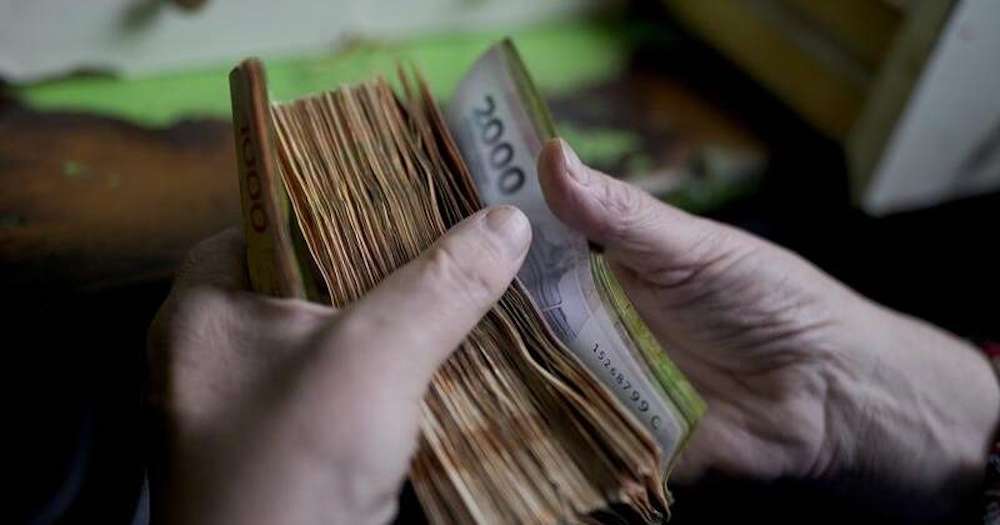Milei faces the potential of reigniting inflation through the proposal to float Argentina’s peso. President Javier Milei is set to unveil his strategy to eliminate the majority of currency controls that have been established over the last five years. This initiative is a fundamental component of Argentina’s new US$20-billion program with the International Monetary Fund. In the bustling streets of Buenos Aires, Abons instructed his team to maintain their position.
Each morning, Carlos Abons, alongside his six employees, embarks on a routine visit to hardware stores throughout Buenos Aires. Their mission involves delivering electrical supplies while actively engaging customers to stimulate new orders for his family-operated enterprise. This Monday marked a notable departure from the norm for them. “We chose not to pursue a sale,” stated the 73-year-old salesman from Dalessandri, a distributor of electrical materials. “We reported zero sales.”
Concerns regarding the newly floating currency were validated Monday morning, as traders indicated that it could result in selling products for less than the cost of replacement. The peso experienced a significant depreciation of 10 percent as official markets opened, falling to 1,195 per dollar from the previous close of 1,076 on Friday. Milei’s move to relax currency controls is influencing the real economy significantly. Retailers and importers are strategically recalibrating their pricing structures in response to the depreciation of the peso. Concerns are rising that this could trigger inflation, a significant challenge that Milei successfully addressed during his initial year in office. The inquiry at hand is whether this instance may present a unique scenario.
Private consulting firms have adjusted their inflation projections for 2025 upwards, despite a prevailing sense of optimism regarding Milei’s newly implemented economic policies. The President is considering the peso’s valuation ahead of crucial midterm elections in October, following a successful first year marked by fiscal and trade surpluses. Juan Pablo Ronderos, a partner responsible for economics and markets at Argentine consultancy firm MAP, indicates that 50% of the impact from the peso’s depreciation is expected to materialize within the next three months. Ronderos has adjusted MAP’s annual inflation forecast, increasing it by 10 percentage points to a new rate of 33 percent. “We are closely monitoring the pace of core inflation in March, and this will be further impacted by the pass-through effects of the devaluation,” Ronderos stated.
Consultancy firm FMyA has revised its inflation forecast for the year, now projecting a rate of 32 percent, a significant increase from the 25 percent estimate provided just a week ago. Numerous traders dealing in imported goods have opted to promptly transfer the 10-percent increase in exchange rates to their clientele. The explanation is straightforward: a significant number of products are billed in dollars, yet they are quoted in pesos based on the official exchange rate of the day. Prices for domestic products, which often incorporate imported inputs, are experiencing an upward trend. “A 10-percent increase for domestic products is currently under consideration,” stated Abons. “It is highly likely that prices will rise, and when I attempt to replace it, there is a possibility of incurring a financial loss.”
Economists and business leaders identify two key factors that suggest inflation is unlikely to spiral out of control in the near term, particularly when compared to previous sudden devaluations experienced in recent years. There is a notable level of confidence in Milei’s economic program, with many individuals expressing the belief that the peso will not experience a continued aggressive decline. Another factor is that demand remains significantly low, preventing companies from being able to implement substantial price increases.
Retailers find themselves navigating a precarious landscape. In a significant development, the cost of imported products has surged dramatically in a short period. Conversely, the market shows a limited willingness to accommodate increased prices. “Implementing a 10-percent direct price increase for consumers in one go poses significant risks given the current low demand,” stated Manuel Loitegui, product manager for the Puppis chain of pet stores, which sources nearly all its products from China.
The construction materials industry is experiencing a comparable trend. Importers have directly transferred their costs to consumers. “There were some adjustments, but my feeling is that nobody wants this to go awry,” stated Pablo Gaitán, the operator of Corralón Ciudadela, a lumberyard located just outside Buenos Aires. “We exercise caution in our approach.” There is a universal desire to achieve sales success.
Fernando Furci, the director general of the Cámara de Importadores de la República Argentina, is accustomed to experiencing significant disruptions in sales during events of this nature. However, he asserts that importers have exhibited a different behavior this time around. “Certain entities are providing goods accompanied by open invoices, with the intention of settling prices at a later date,” he stated, emphasizing that this reflects a significant level of confidence in the current circumstances. “The current market shows signs of weak demand.” The profit margins are notably narrow. Organizations are meticulously analyzing each action taken. There is currently no entity positioned to take assertive action.

